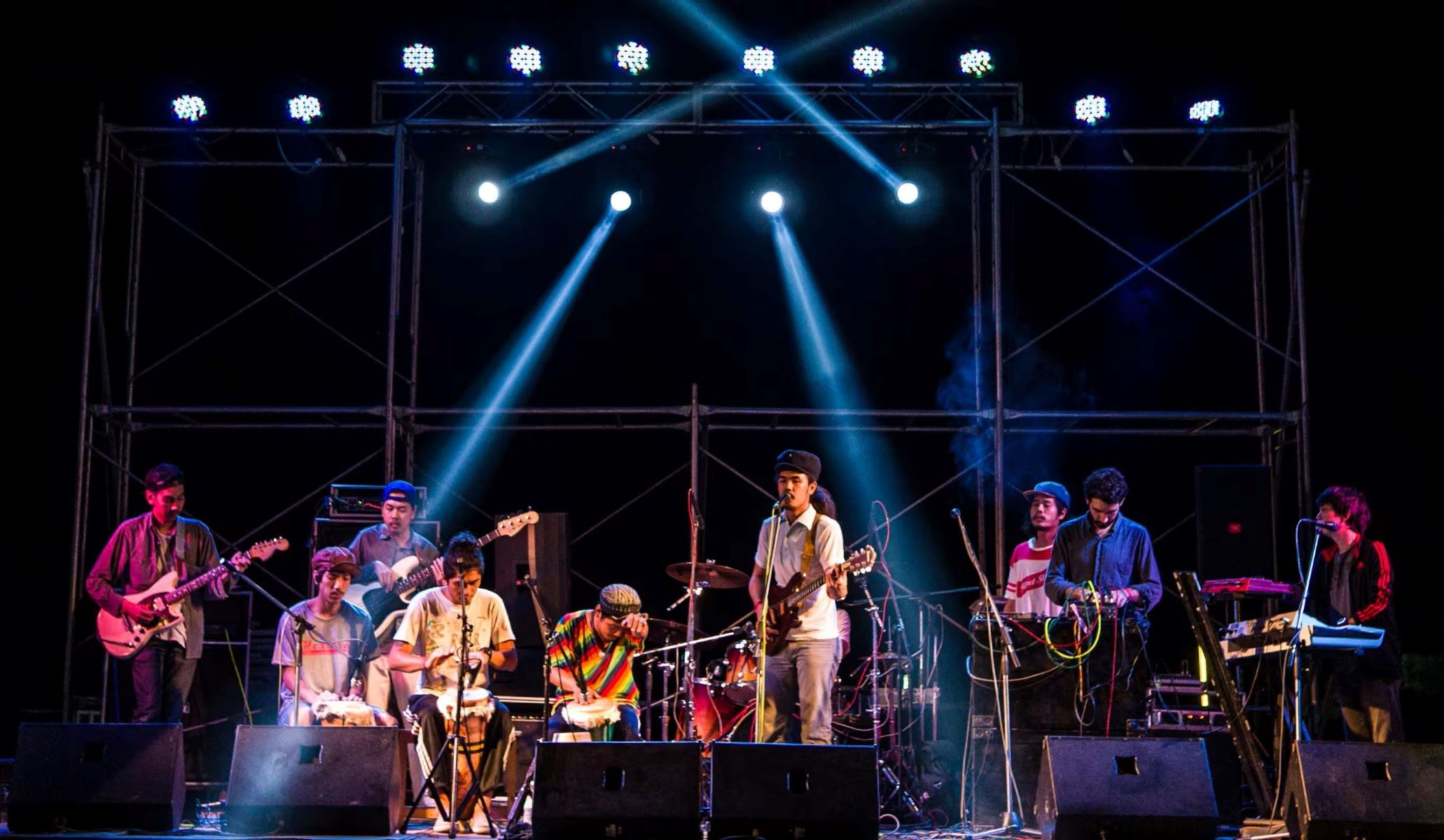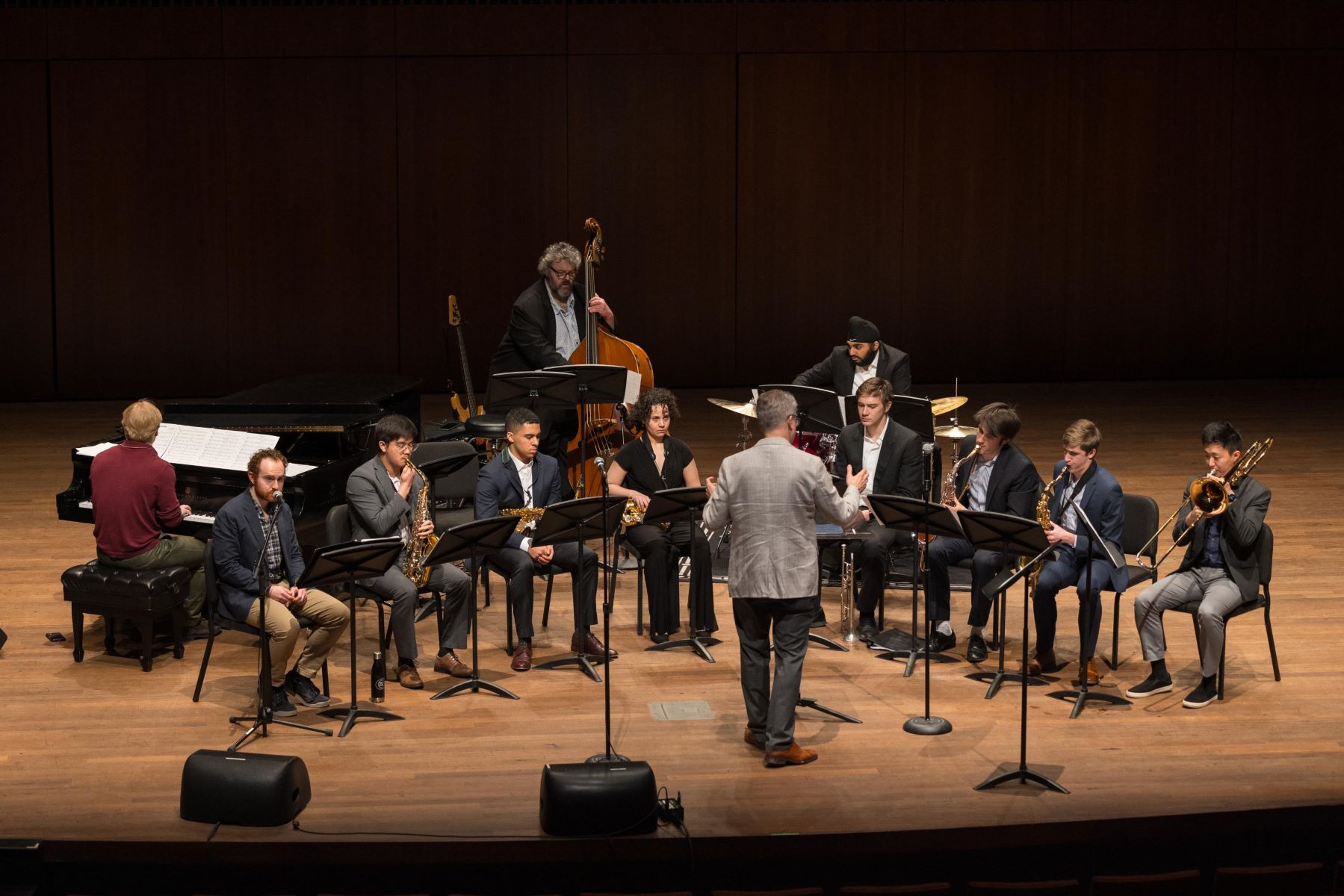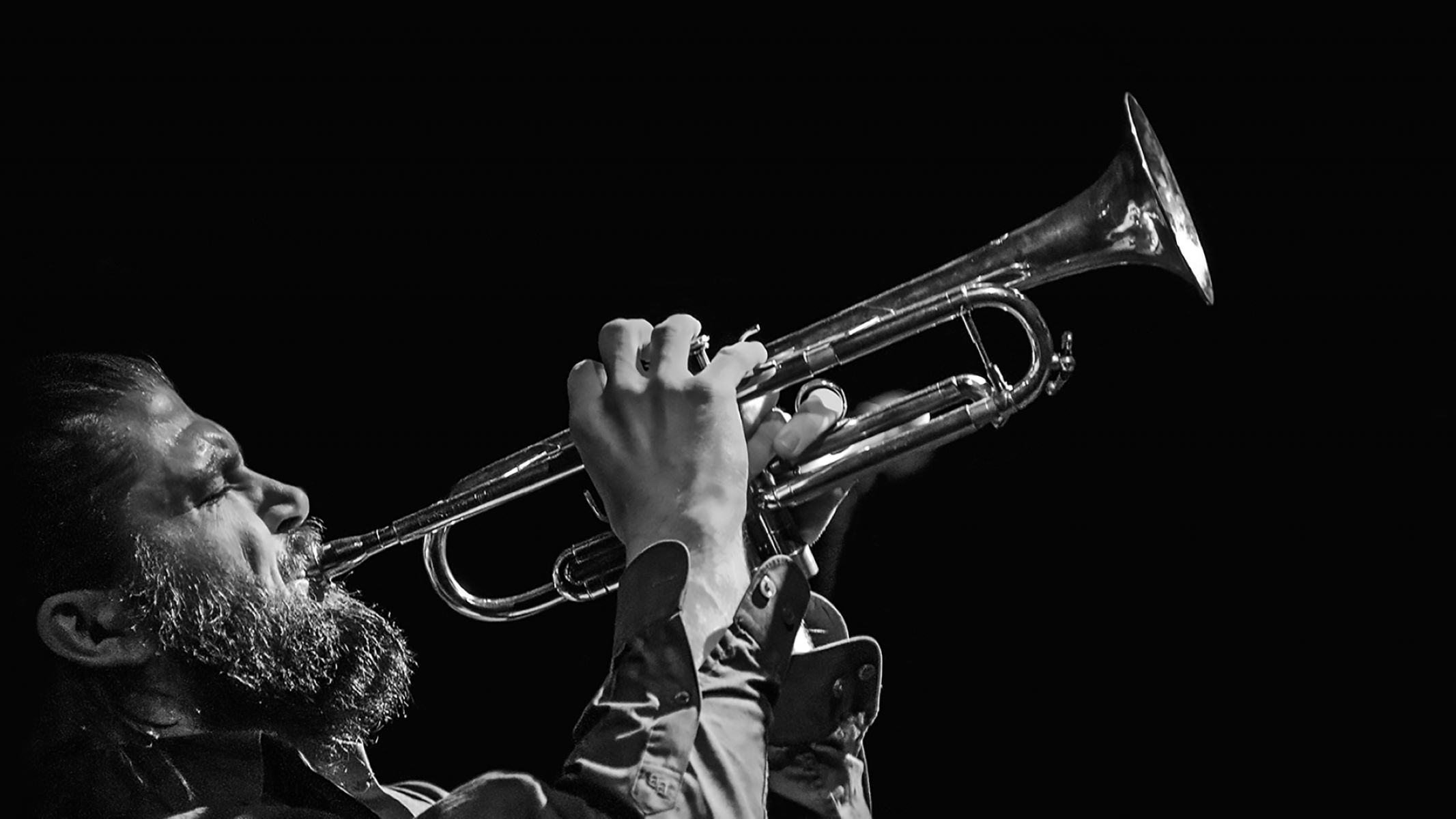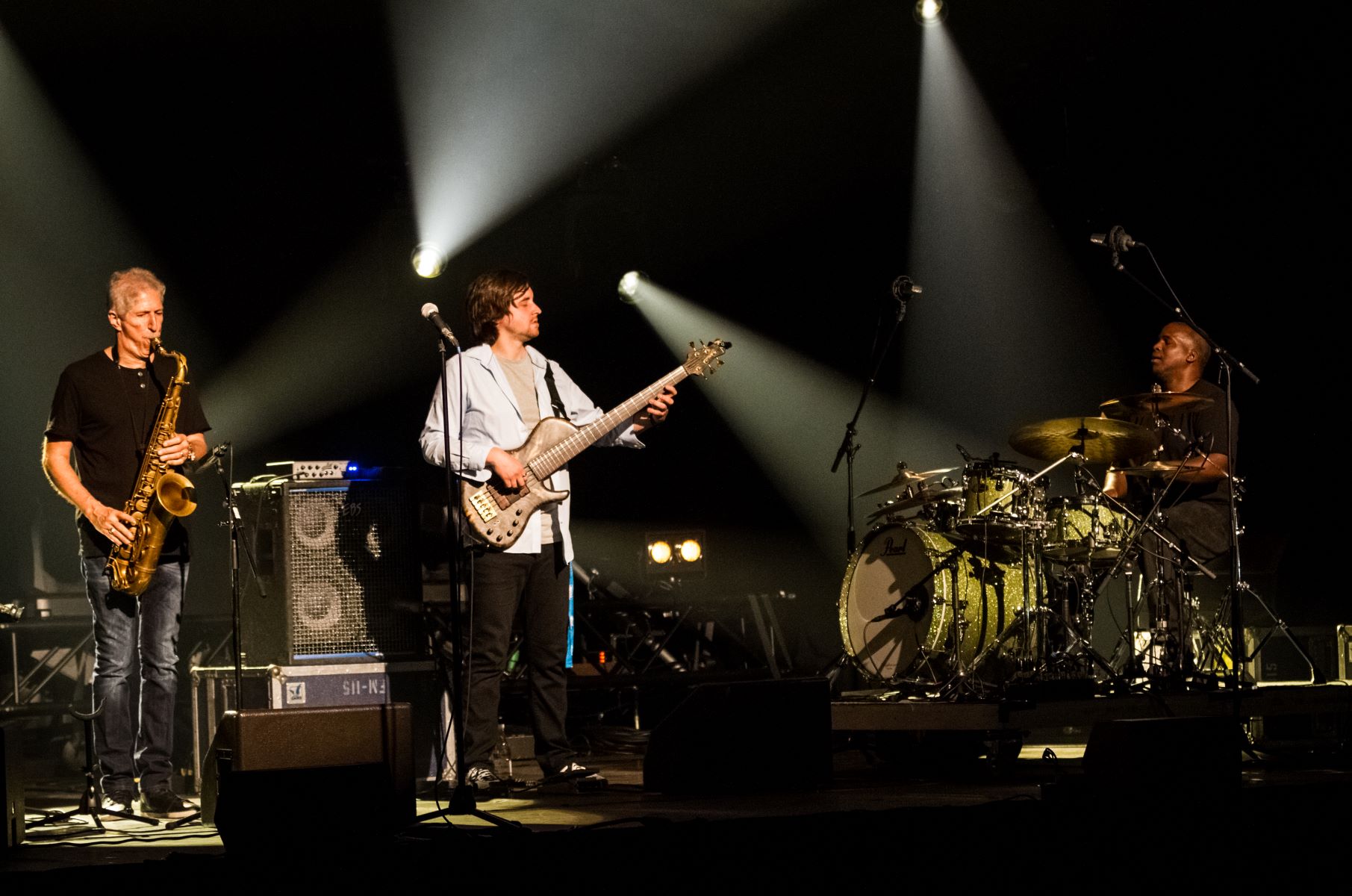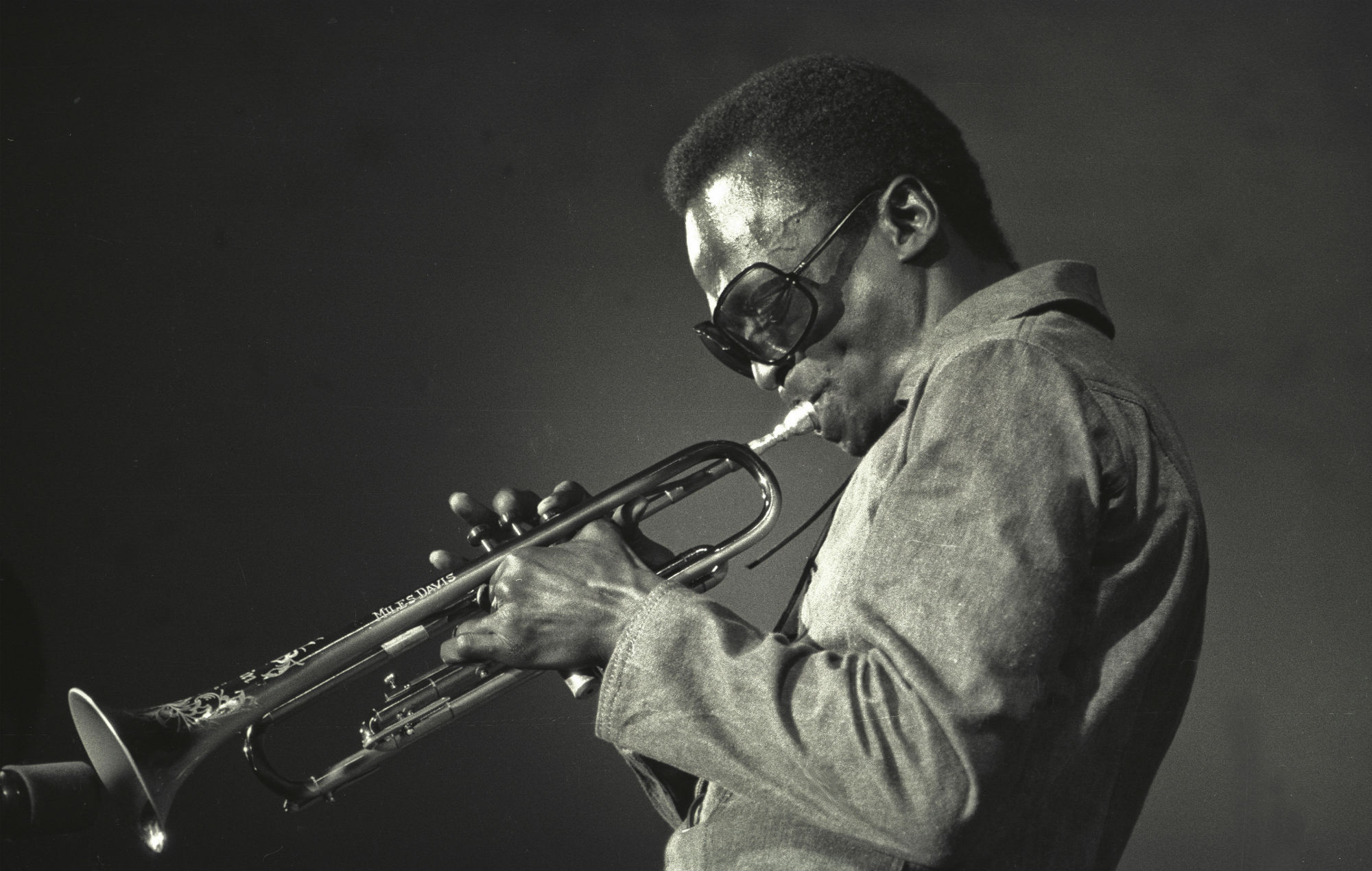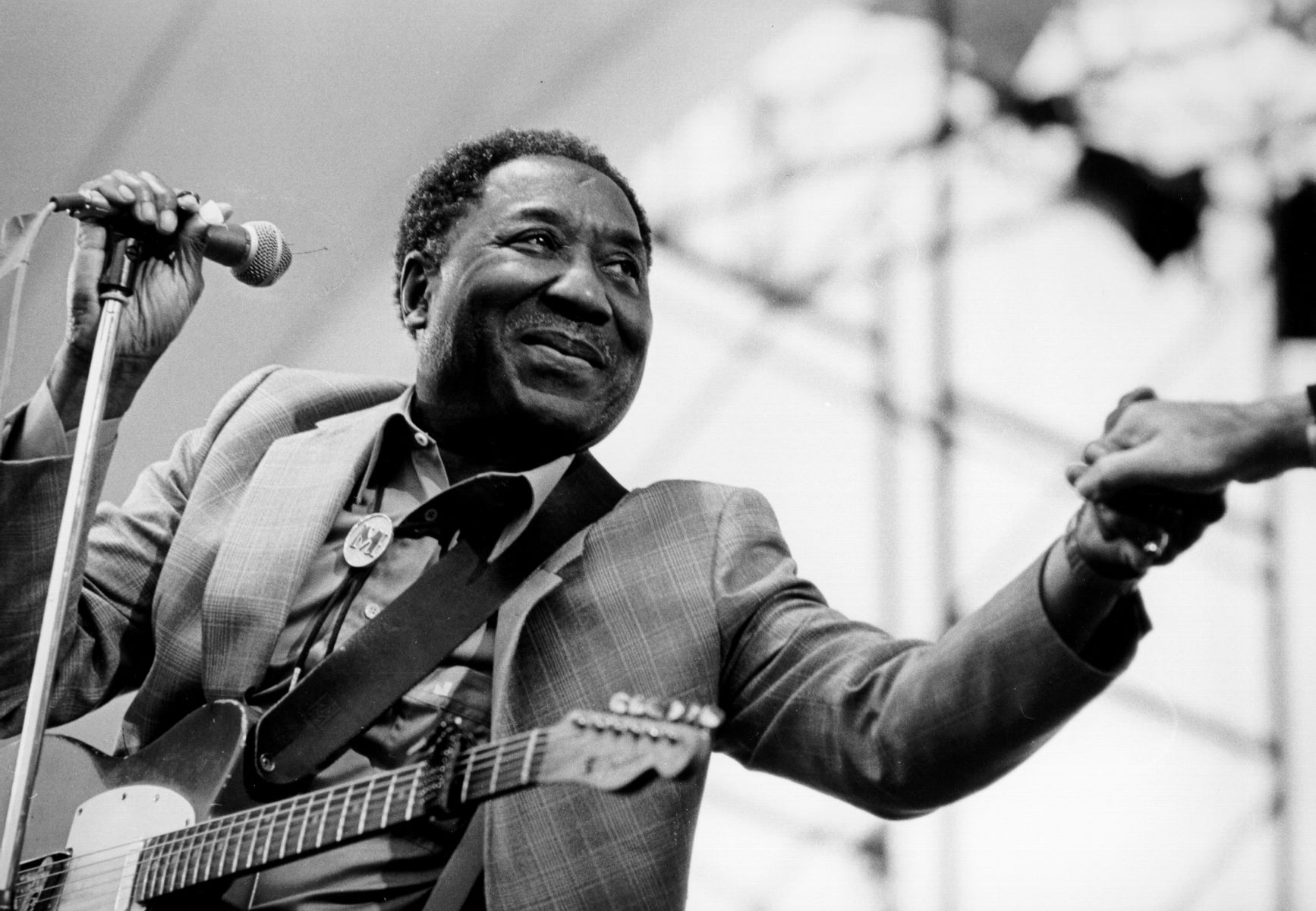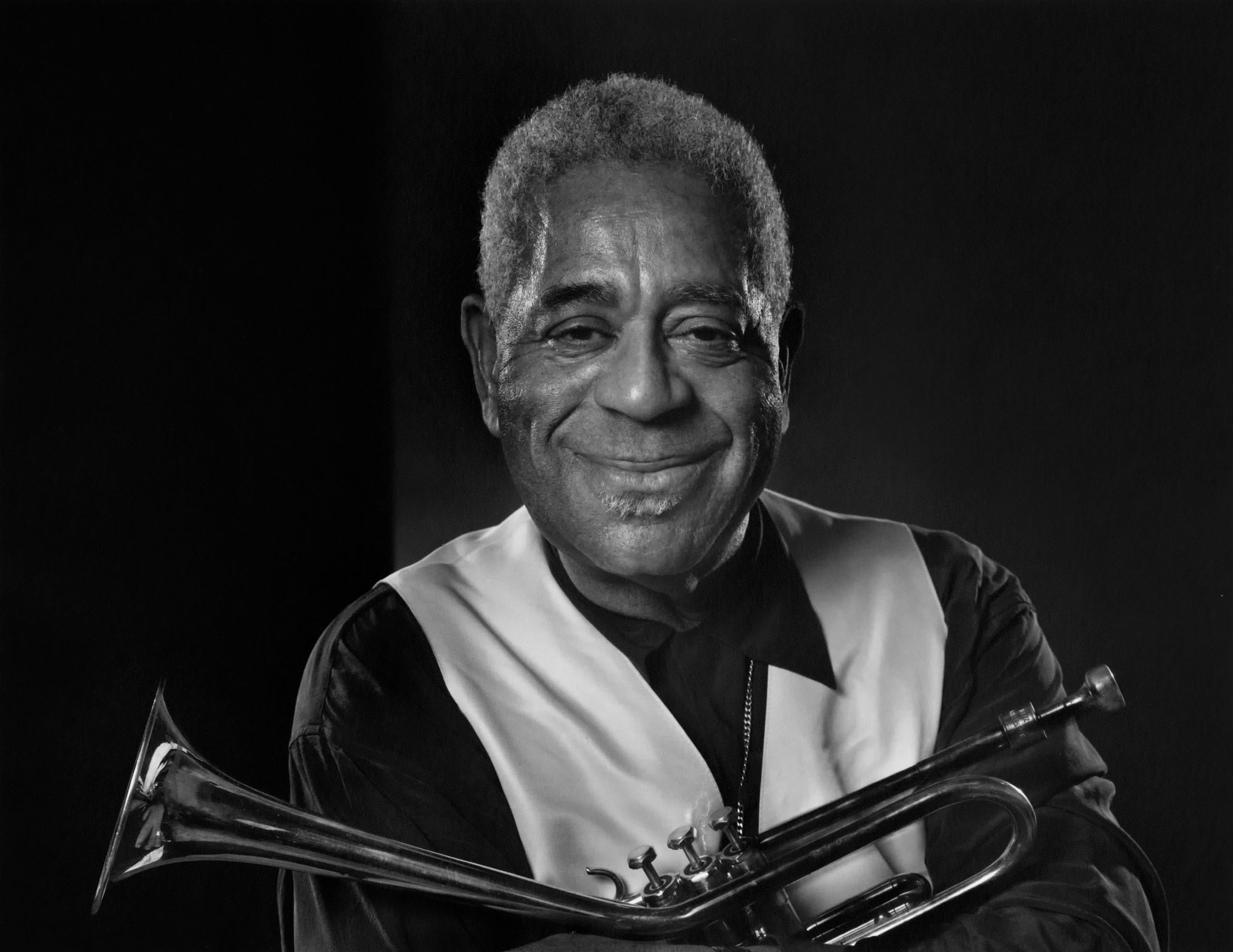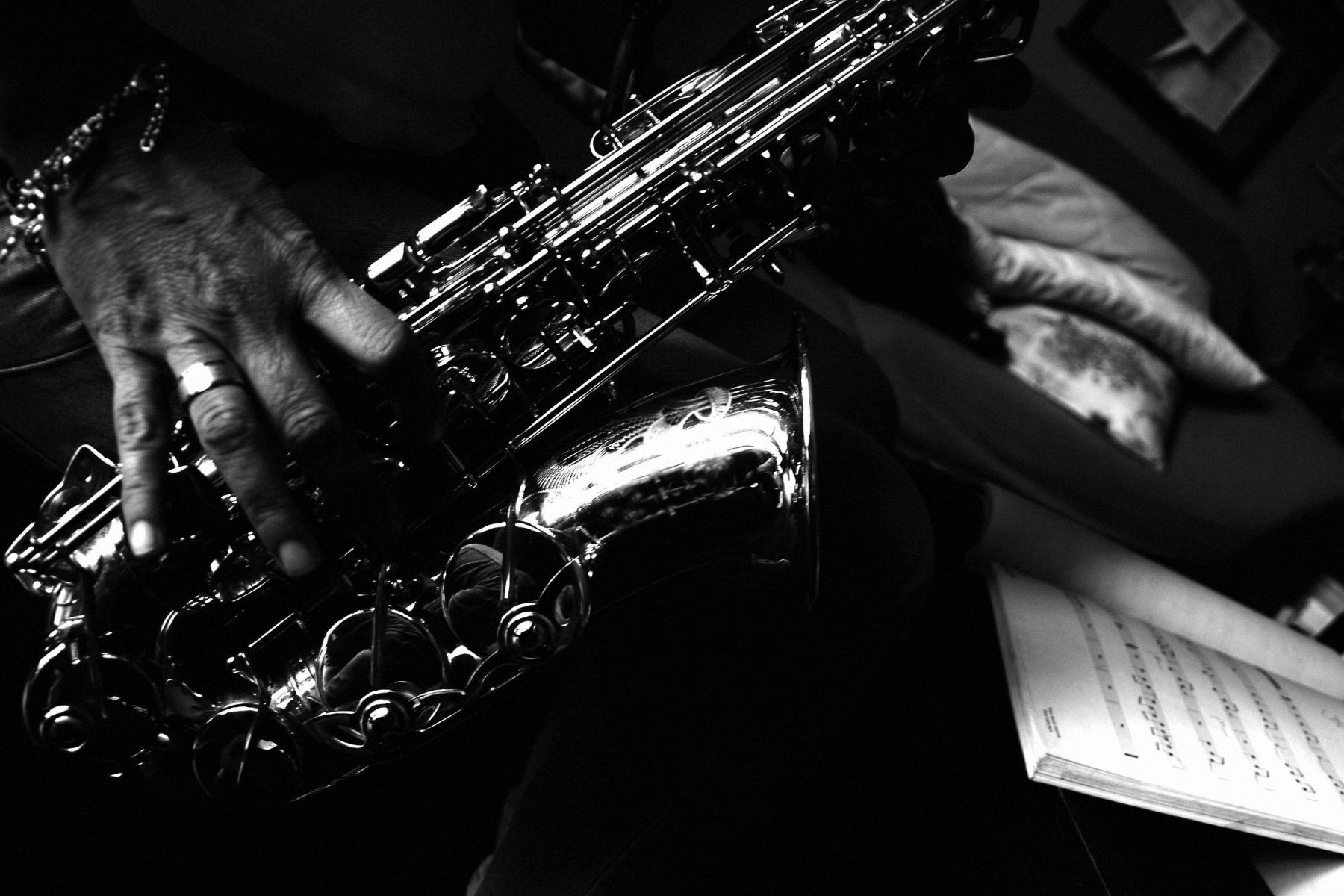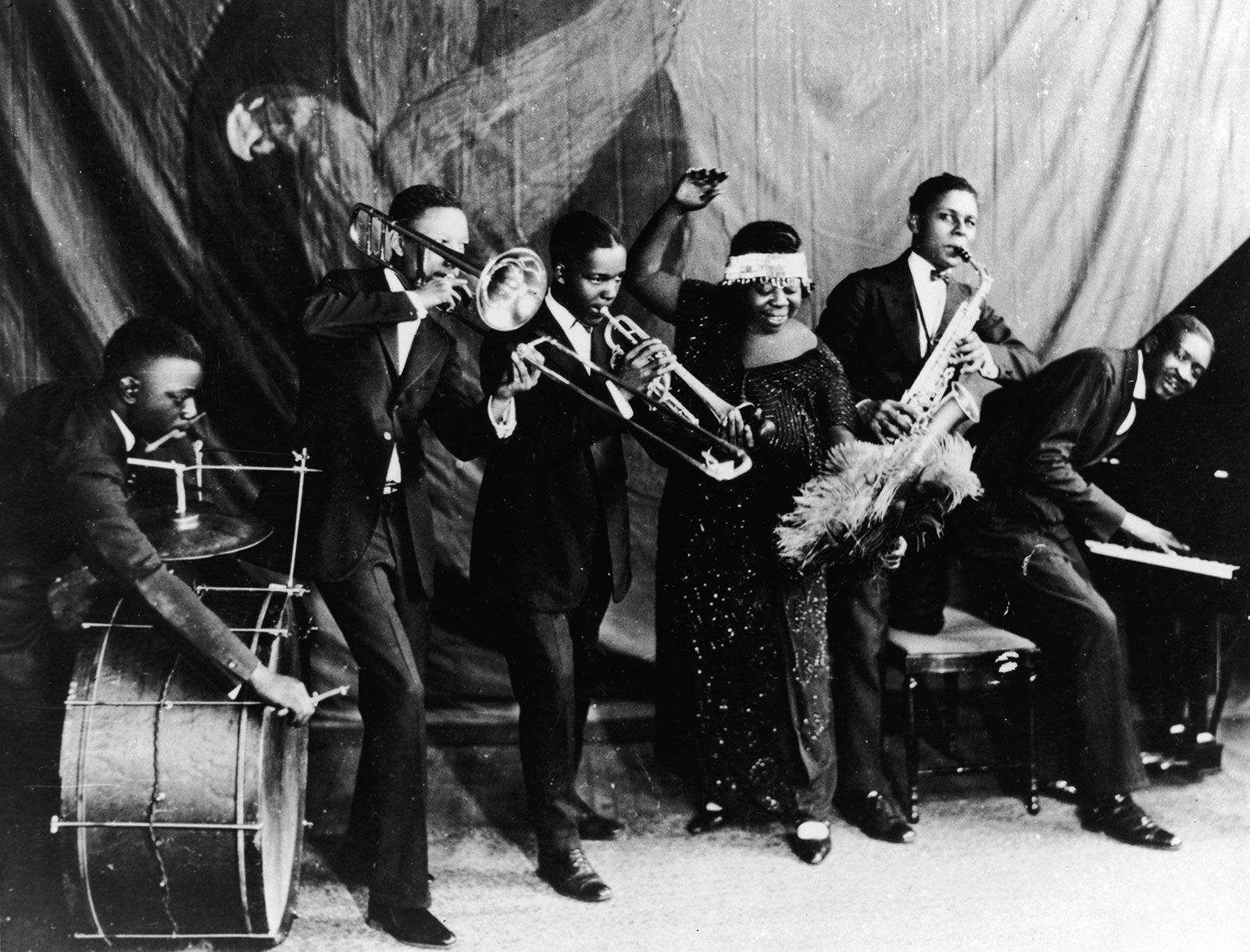Home>Genres>Jazz>What Style Of Jazz Music Most Influenced The Beat Poets


Jazz
What Style Of Jazz Music Most Influenced The Beat Poets
Modified: January 22, 2024
Discover how jazz music played a vital role in shaping the artistic expression of the Beat Poets, influencing their distinctive style and poetic rhythms.
(Many of the links in this article redirect to a specific reviewed product. Your purchase of these products through affiliate links helps to generate commission for AudioLover.com, at no extra cost. Learn more)
Table of Contents
Introduction
Jazz and poetry have long enjoyed a symbiotic relationship, with each art form inspiring and influencing the other. One pivotal moment in the convergence of these two art forms was the emergence of the Beat Generation in the 1950s. This countercultural movement, led by writers such as Jack Kerouac, Allen Ginsberg, and William S. Burroughs, sought to rebel against mainstream society and embrace a freer, more spontaneous way of living and creating art.
At the heart of the Beat Generation’s creative expression was the marriage of poetry and jazz. The Beat poets drew inspiration from the improvisational nature and rebellious spirit of jazz music, infusing their poetry with a rhythmic and experimental style that resonated with the sounds of the jazz greats of the time.
In this article, we will explore the fascinating connection between jazz music and Beat poetry, delving into the specific jazz styles that most influenced the Beat poets and examining the ways in which this relationship shaped both art forms.
So sit back, relax, and delve into the world of jazz and poetry as we embark on a journey to discover the style of jazz music that most influenced the Beat poets.
Origins of Beat Poetry
To understand the influence of jazz music on the Beat poets, it is important to delve into the origins of Beat poetry itself. The Beat Generation emerged in the post-World War II era as a response to the conformist culture of the time.
The term “Beat” was coined by Jack Kerouac in the late 1940s and was initially used to describe the weary and worn-down nature of the generation. However, as the movement gained momentum, it took on a more rebellious and expressive meaning.
The Beat poets rejected the values of mainstream society and sought to create a new, more authentic way of living and writing. They embraced a bohemian lifestyle of spontaneity, experimentation, and non-conformity.
One of the key influences on Beat poetry was the African-American literary and cultural movement known as the Harlem Renaissance of the 1920s. This artistic movement, characterized by its celebration of Black culture and its embrace of jazz and improvisation, laid the groundwork for the rhythmic and syncopated style that the Beat poets would later adopt.
Another significant influence on Beat poetry was the writings of the French poet Arthur Rimbaud. Rimbaud’s revolutionary approach to poetry, his rejection of traditional forms and structures, and his exploration of new and unconventional subject matter resonated deeply with the Beat poets.
By combining the influences of the Harlem Renaissance, Rimbaud’s radical approach, and their own unique experiences, the Beat poets began to develop a distinct poetic style that would be inextricably linked with the sounds of jazz.
Now that we have established the origins of Beat poetry, let us explore the relationship between this poetic movement and jazz music in greater detail.
The Relationship Between Beat Poetry and Jazz Music
The relationship between Beat poetry and jazz music is characterized by a shared sense of improvisation, rhythm, and rebellion against societal norms. Jazz music, with its emphasis on spontaneity and individual expression, provided a perfect musical backdrop for the Beat poets to explore their own poetic impulses.
The Beat poets were drawn to the raw energy and emotional depth of jazz, finding in it a reflection of their own artistic and personal journeys. Just as jazz musicians would engage in instrumental improvisation, the Beat poets sought to capture the essence of the moment, expressing their thoughts and emotions through spontaneous and often unstructured poetry.
Moreover, jazz music served as a source of inspiration for the Beat poets, influencing their language, style, and poetic techniques. They sought to replicate the rhythmic complexity and melodic phrasing of jazz within their own writing, creating a fusion of sound and words that defied traditional literary conventions.
It is important to note that the relationship between Beat poetry and jazz music was not one of mere imitation or surface-level influence. Instead, it was a genuine collaboration between two art forms that sought to push boundaries and challenge the status quo.
The Beat poets often frequented jazz clubs and coffeehouses, soaking in the musical performances and engaging with the musicians themselves. They saw the jazz musicians as kindred spirits, fellow rebels who defied societal norms and expressed themselves through their art.
This close proximity to jazz musicians allowed the Beat poets to witness firsthand the process of improvisation, the interplay between musicians, and the way in which a musical performance could ignite and inspire emotions. They took these experiences and channeled them into their own poetic compositions.
Ultimately, the relationship between Beat poetry and jazz music was a reciprocal and transformative one. Just as jazz music inspired the Beat poets to explore new artistic territories, the poems of the Beat Generation provided a fresh perspective on jazz, highlighting its social and cultural significance.
In the following sections, we will delve into the specific jazz styles that had the most significant impact on the Beat poets: bebop, cool jazz, and hard bop. Through their exploration of these jazz styles, the Beat poets found a musical language that resonated deeply with their own poetic vision.
Jazz Styles in the 1940s and 1950s
The 1940s and 1950s were a transformative period for jazz music, as new styles emerged and pushed the boundaries of the genre. These jazz styles played a crucial role in influencing the Beat poets and shaping the poetic landscape of the time.
One of the notable jazz styles of this era was bebop. Bebop emerged in the early 1940s as a reaction against the commercialized and formulaic nature of swing music. Bebop musicians, including Charlie Parker and Dizzy Gillespie, introduced complex harmonies, rapid tempos, and intricate improvisations into their compositions.
This style of jazz resonated deeply with the Beat poets, as both embraced a sense of rebellion and non-conformity. The spontaneous nature of bebop improvisation, with its rapid-fire melodies and unexpected harmonies, mirrored the freewheeling and experimental approach to language and structure taken by the Beat poets.
Cool jazz was another significant development of the 1940s and 1950s. This style, pioneered by musicians such as Miles Davis and Chet Baker, emphasized a more subdued and relaxed atmosphere compared to the high-energy bebop. Cool jazz featured softer tones, slower tempos, and a subtler approach to improvisation.
The cool jazz style resonated with the introspective and reflective nature of the Beat poets’ works. The laid-back and introspective mood of cool jazz provided a musical backdrop for the contemplative and often confessional nature of Beat poetry, allowing the words to breathe and the emotions to unfold.
Hard bop, which emerged in the mid-1950s, was another significant jazz style of the time. Hard bop retained the bebop’s fast tempo and complex harmonies but incorporated elements of blues and gospel music, resulting in a more soulful and earthy sound. Musicians such as Art Blakey, Horace Silver, and John Coltrane were at the forefront of this style.
The driving rhythms and passionate improvisations of hard bop resonated with the energy and vitality of the Beat poets’ writings. The deep emotional resonance of hard bop, coupled with its rhythmic intensity, provided a powerful foundation for the Beat poets to express their own emotions and thoughts.
These jazz styles of the 1940s and 1950s served as a dynamic backdrop for the Beat poets, inspiring their rhythmic and experimental approach to poetry. As we delve further into the specific influences of bebop, cool jazz, and hard bop on the Beat poets, we will gain a deeper understanding of the interconnectedness between these art forms.
Bebop and its Influence on the Beat Poets
Bebop, with its rapid tempos, intricate improvisations, and complex harmonies, had a profound influence on the Beat poets. This jazz style, pioneered by musicians such as Charlie Parker and Dizzy Gillespie in the 1940s, resonated with the rebellious and spontaneous spirit of the Beat Generation.
The improvisational nature of bebop mirrored the Beat poets’ approach to writing. Bebop musicians would often engage in extended improvisations, exploring new melodies and harmonies on the spot. Similarly, the Beat poets sought to capture the immediacy of the moment, writing in a stream-of-consciousness style that paralleled the improvisational nature of bebop.
The rhythmic complexity of bebop also had a significant impact on the Beat poets’ poetry. Just as the musicians would navigate intricate chord progressions and syncopated rhythms, the poets embraced a more intricate and fragmented approach to language. They experimented with unconventional word choices, syntax, and line breaks, creating a sense of musicality within their poetic compositions.
Furthermore, the rebellious and non-conformist nature of bebop resonated deeply with the Beat poets’ rejection of mainstream society. Bebop emerged as a reaction against the commercialized and formulaic nature of swing music, and the Beat poets saw in this musical rebellion a kindred spirit. They embraced bebop’s boundary-pushing nature and used it as a model for their own artistic expression, pushing the boundaries of traditional poetry and language.
It is worth noting that the Beat poets not only drew inspiration from the musical elements of bebop but also embraced the jazz aesthetic and ethos. Bebop musicians were known for their dedication to their craft, their relentless pursuit of artistic excellence, and their willingness to take risks. These values resonated with the Beat poets, who saw in bebop a reflection of their own devotion to their art and their desire to push beyond societal limitations.
In summary, bebop had a profound influence on the Beat poets. Its improvisational nature, rhythmic complexity, and rebellious spirit resonated deeply with the poets, inspiring them to adopt a more experimental and spontaneous approach to their poetry. By embracing the energy and innovation of bebop, the Beat poets further blurred the boundaries between poetry and music, creating a unique artistic fusion.
Cool Jazz and its Influence on the Beat Poets
Cool jazz, which emerged in the 1940s and 1950s, had a distinct influence on the Beat poets. This jazz style, known for its relaxed tempos, softer tones, and subtler improvisations, provided a musical backdrop that resonated with the introspective and reflective nature of the Beat poets’ works.
The cool jazz movement, spearheaded by musicians like Miles Davis and Chet Baker, offered a departure from the high-energy bebop of the time. It embraced a more laid-back and understated approach, creating a space for introspection and contemplation.
The cool jazz aesthetic aligned with the Beat poets’ desire for a more spontaneous and unfiltered expression of emotions. The soft, mellow tones of cool jazz created an intimate atmosphere that mirrored the poetic introspection of the Beat poets. Just as cool jazz musicians explored subtle melodic variations and delicate phrasing, the Beat poets sought to capture the nuances of human emotions and experiences through their poetry.
The relaxed tempos of cool jazz also provided a sense of rhythmic freedom for the Beat poets. This allowed them to explore a more relaxed and flowing approach to their writing, breaking away from the fast-paced rhythms of bebop. In cool jazz, the steady and unhurried beat provided a canvas for the poets to play with language, creating a sense of spaciousness and allowing their words to breathe.
Cool jazz also functioned as a source of inspiration for the Beat poets in terms of mood and atmosphere. The ethereal and evocative nature of cool jazz set the stage for the poets to delve into contemplation and explore existential themes. The introspective quality of the music allowed the poets to delve into their own emotions and thoughts, resulting in a poetic landscape infused with a sense of vulnerability and reflection.
Furthermore, cool jazz’s departure from the traditional swing rhythm and focus on individual expression resonated with the Beat poets’ desire for artistic freedom. The cool jazz movement encouraged musicians to explore their own unique voices and forge new paths. This spirit of individualism and defiance of conventions aligned with the Beat poets’ rejection of mainstream society and their quest for personal authenticity.
In essence, cool jazz had a profound influence on the Beat poets, providing them with a musical language that complemented their introspective and reflective poetic style. The mellow tones, relaxed tempos, and focus on individual expression in cool jazz served as a catalyst for the Beat poets to explore new realms of poetry, infusing their works with a sense of intimacy, vulnerability, and contemplation.
Hard Bop and its Influence on the Beat Poets
Hard bop, a jazz style that emerged in the mid-1950s, had a significant influence on the Beat poets. This style integrated elements of blues, gospel, and rhythm and blues into the bebop framework, resulting in a more soulful and earthy sound.
Hard bop resonated with the Beat poets due to its driving rhythms, passionate improvisations, and emotional depth. Just as hard bop musicians like Art Blakey, Horace Silver, and John Coltrane expressed their emotions through their music, the Beat poets sought to capture the essence of their experiences and personal struggles through their poetic compositions.
The intense energy and improvisational nature of hard bop music served as a source of inspiration for the Beat poets. The fiery and exuberant solos found in hard bop mirrored the poets’ desire to break free from societal constraints and express their individuality. The rhythmic intensity and pulsating beats of hard bop propelled the Beat poets’ words, infusing their compositions with a sense of urgency and vitality.
Moreover, hard bop brought forth a strong sense of African-American cultural identity to the forefront. The incorporation of blues and gospel elements in hard bop reflected the Beat poets’ fascination with African-American culture and their commitment to celebrating it through their poetry. The raw and emotional quality of hard bop connected with the Beat poets’ desire to explore the human experience through their art.
The influence of hard bop on the Beat poets extended beyond just the musical aspects. The hard bop movement embraced a sense of community and collaboration among musicians, with group interaction and communication being highly valued. This communal aspect of hard bop resonated with the Beat poets, who also sought to create a sense of unity and camaraderie among their artistic peers.
Furthermore, the social and political implications of hard bop were not lost on the Beat poets. The music encapsulated the African-American experience in a time of social change and struggle. The Beat poets, with their own themes of rebellion and social commentary, found in hard bop an artistic form that amplified their own messages and ideologies.
In summary, hard bop had a profound influence on the Beat poets. Its driving rhythms, passionate improvisations, and soulful expressions served as a source of inspiration for the poets’ own artistic pursuits. The raw and emotional nature of hard bop mirrored the Beat poets’ desire for authenticity and personal expression, while the cultural and communal elements of the movement resonated with their own artistic vision. Hard bop provided a powerful musical backdrop for the Beat poets to explore the depths of their experiences and bring their poetry to life.
Conclusion
The relationship between jazz music and Beat poetry is a testament to the power of artistic collaboration and cross-pollination. The Beat poets drew inspiration and influence from the various jazz styles of the 1940s and 1950s, infusing their poetry with the improvisational spirit, rhythmic complexity, and rebellious nature of jazz.
The origins of Beat poetry in the countercultural movement of the 1950s created a fertile ground for the convergence of jazz and poetry. The Beat poets sought to break free from societal norms and embraced a more spontaneous and experimental approach to their art. Jazz, with its rich history of defiance and innovation, provided the perfect sonic palette for them to channel their poetic voice.
Bebop, cool jazz, and hard bop each had a unique influence on the Beat poets. Bebop’s rapid tempos and complex improvisations mirrored the poets’ own explorations of language and structure. Cool jazz resonated with their introspective and reflective nature, while hard bop brought forth a sense of intensity, community, and social commentary.
The relationship between jazz and Beat poetry went beyond mere musical influence. It was a reflection of shared values – a commitment to artistic freedom, individual expression, and a rejection of societal conformity. The Beat poets saw in jazz a kindred spirit, a rebellious art form that defied categorization and pushed the boundaries of convention.
Through this interplay between jazz and Beat poetry, a new form of artistic expression emerged. The Beat poets created a fusion of words and music, inviting readers to experience the rhythms, emotions, and energy of jazz through the immersive world of poetry.
The influence of jazz on the Beat poets continues to resonate in contemporary literature and music. It serves as a testament to the enduring power of these art forms to inspire and challenge societal norms.
In closing, the relationship between jazz music and Beat poetry is a testament to the symbiotic nature of artistic expression. The Beat poets found in jazz a muse, a source of inspiration that guided their poetic journey. Jazz, in turn, was forever transformed by the creative spirit and rebellious energy of the Beat poets. Together, they forged a powerful and enduring artistic legacy that continues to captivate and inspire audiences to this day.

